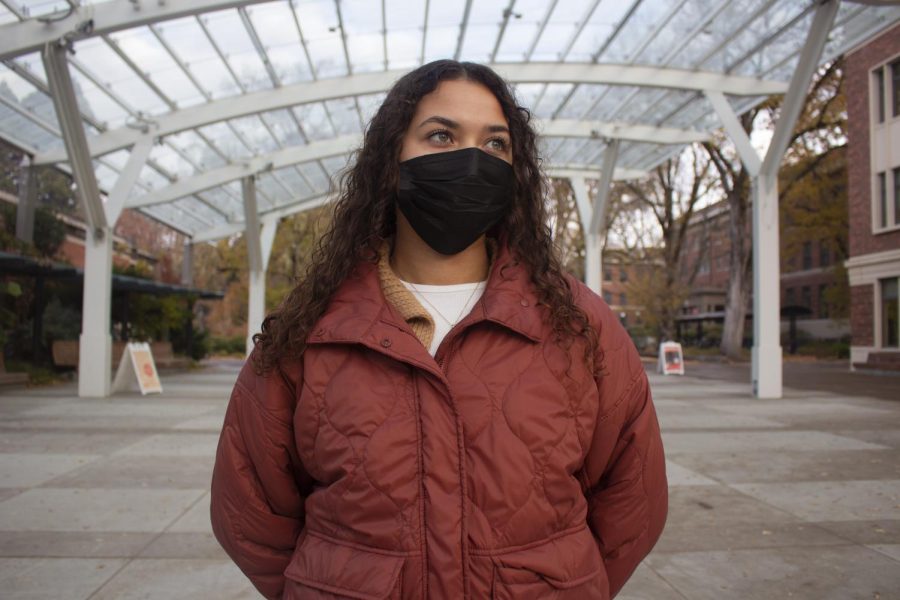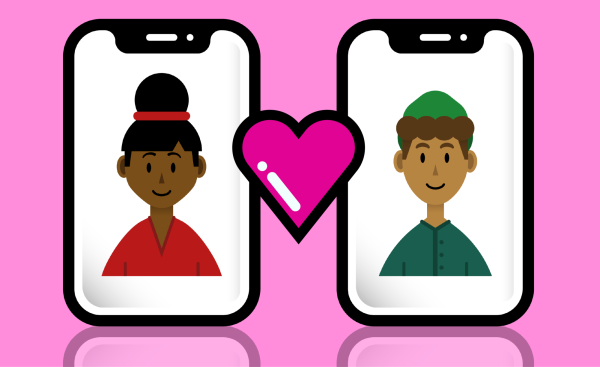Not your grandma’s weed: Unknowns about long-term effects of cannabis use today
Cierah Clay (she/her) poses for a photo illustration on Nov. 21 under the Student Experience Center Plaza on Oregon State University’s campus. Restrictions on marijuana use prior to legalization provided researchers with knowledge of long-term effects of marijuana on health.
January 27, 2023
With the legal landscape around cannabis in the United States changing over the past decade, more and more people are picking up a pipe—but what do we know about the long-term health impacts?
Research for other substances has been published for decades showing negative health effects following years of use, but many questions still remain for cannabis itself. Thanks to the various potencies and ways to ingest seen today, our understanding of cannabis’ health effects is ongoing.
“When it became a controlled substance from 1970 onwards, a lot of the research was from the perspective of a drug of abuse rather than trying to understand the medicinal properties,” said Jane Ishmael, a professor of pharmacology at Oregon State University. “This designation was a barrier to many lines of research. I think that is changing now and that is why it feels like we are now catching up a bit.”
According to Ishmael, as well as Anita Cservenka, professor and director of the substance use and neurocognition lab at OSU, research defines long-term use as three times or more a week for over a year, and generally correlates long-term effects with heavy or consistent use participants.
According to Cservenka, of the studies that have been conducted comparing frequent users to non-users, users have been found to score lower in cognitive areas such as learning and memory function, but there are many other factors at play and results between studies remain mixed.
“While there are indeed relationships between regular cannabis use and health outcomes, those relationships are very complex and nuanced and it is hard to determine cause-and-effect,” said Jessica Cavalli, an OSU doctoral candidate and member of the substance use and neurocognition lab.
According to Cavalli, the real question behind these identified relationships is which came first—the chicken or the egg principle. This means research thus far leaves too many unknowns to understand which direction these relationships are acting.
“The ideal study is a longitudinal prospective design in which participants are recruited before they start using cannabis and tracked over time to see if some individuals emerge into cannabis use,” Cservenka said. “This can help us understand preexisting differences that could increase risk for cannabis use from those that may result from cannabis use itself.”
Cavalli credits some of the barriers to getting these longitudinal studies and comparable data not only to the confounding variables of when someone started using, but also the difficulty of measuring cannabis use in all its various forms.
“In the alcohol field, there is the ‘standard drink.’ But in the cannabis field, there are so many different forms and methods of using cannabis, which leads to different ways of asking people about it,” Cavalli said. “Should we ask how many joints they smoke per week? Or maybe we ask how many hours they are high per day? Or we could ask how many days in the last month they used?”
Due to the multitude of ways people ingest and various combinations of THC and CBD in products available today, studies today are not the same as studies conducted in the late 20th and even 21st century.
“Most studies to date have focused on participants who report smoking marijuana to examine effects on cognition and health, and haven’t investigated the long-term effects of other forms of cannabis or methods of ingestion because these forms and methods are so much newer,” Cservenka said.
There has, however, been an increase in people experiencing Cannabinoid hyperemesis syndrome, which is categorized as severe nausea and cyclical vomiting without the person having any other illness, according to Ishmael.
“The cannabis plant has many different natural compounds but hyperemesis syndrome is associated with high THC that is triggering this part of the brain that is the underlying signaling that is causing people to feel nauseated,” Ishmael said. “If you can abstain, these symptoms should go away.”
Ishmael describes this condition popping up more and more in emergency rooms as people are often trying marijuana for the first time or returning to using and not understanding the potency of what they are ingesting.
“They might not really enjoy these really strong psychoactive effects,” Ishmael said. “It’s really delta 9 THC that is the primary psychoactive component of marijuana.”
According to Ishmael, it is the endogenous endocannabinoid system that is actually being modulated by delta 9 THC and the other components of marijuana that we know very little about. There are natural receptors in the body that cannabis interacts with but these were not even discovered till the 1990s and have not been studied as deeply.
According to Ishmael, understanding the receptors will benefit our understanding of cannabis’s effect on the body.
While some studies have explored the use of cannabidiol — a component of cannabis known as CBD — in terms of treating anxiety and found positive results, more clinical trials are still needed to assess the full effect let alone any long term effects.
According to Cservenka, the most important thing students should know is that the cannabis of today is not that of the past research. Thus, research cannot make enough solid conclusions yet, meaning there is simply not enough to be known in this emerging area.
“Research on cannabis use is still new and growing, so it is important to do the research for yourself before trying cannabis and make sure to use trusted sources,” Cavalli said.



















